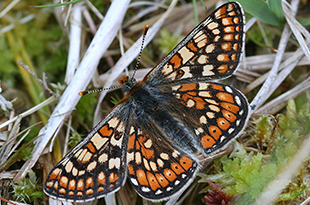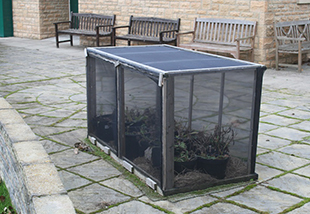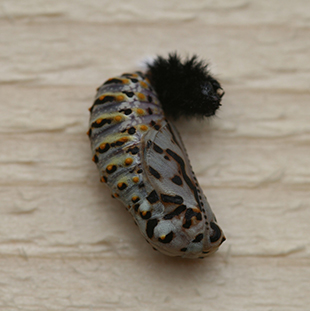Paul Duff, APHA Veterinary Investigation Officer, talks about how he volunteered to help Butterfly Conservation in their project to save the marsh fritillary butterfly in Northern England.

The marsh fritillary (Euphydryas aurinia) is a medium sized British butterfly that used to be widespread in Britain and Ireland, but is now much more restricted and rare. It has beautifully marked wings with a checker-board pattern of orange and yellow spots.
The primary habitat for this beautiful and rare butterfly is marshy fields that have some grazing. Many of these types of fields have been drained, or are considered unsuitable for commercial cattle grazing compared to modern sown pastures and that is why the butterfly has become rare.

Butterfly Conservation, the organisation primarily involved with butterfly conservation in Great Britain, started the programme because the species was extinct in Cumbria (and in most of England). A reintroduction has never been successful anywhere in the world, so this was a great achievement that APHA voluntary staff were part of.
Together with other voluntary staff from the APHA Veterinary Investigation Centre in Penrith, we decided to help Butterfly Conservation in their attempt to save the butterflies. Caterpillars from the last colony of the butterfly in Cumbria, were taken under licence into captivity and, to summarise a long story, over a period of about 5 years, the captive caterpillars and butterflies were bred at 7 sites in special net covered cages. The Penrith Centre was chosen as one of the sites because it was a few miles from the last colony and because some of the staff at the centre are very interested in the species.
Each June the staff at Penrith, could take our tea-breaks and watch the adult butterflies emerge, fly, mate and lay eggs inside the cage which was placed on the centre’s patio (see photo right).

Although the captive breeding has now stopped at Penrith, nearly 10,000 caterpillars were produced in the cage over the 5 year period. Each year the caterpillars were released, again under licence, on to prepared new sites in the county.
While the fortunes of the butterfly in the wild in Cumbria still fluctuate, there are 18 colonies that are thriving. 4 of these were self-colonised in 2016 by natural migration from reintroduced sites which was part of the strategy set out by Butterfly Conservation.
At one new colony, on the National Nature Reserve (NNR) at Finlandrigg in Cumbria, which has access for the general public, hundreds of butterflies could be seen flying in early June 2016. In total on different Cumbria sites, approximately 2,000 egg batches were produced.
Follow APHA on Twitter and don't forget to sign up to email alerts.

Recent Comments